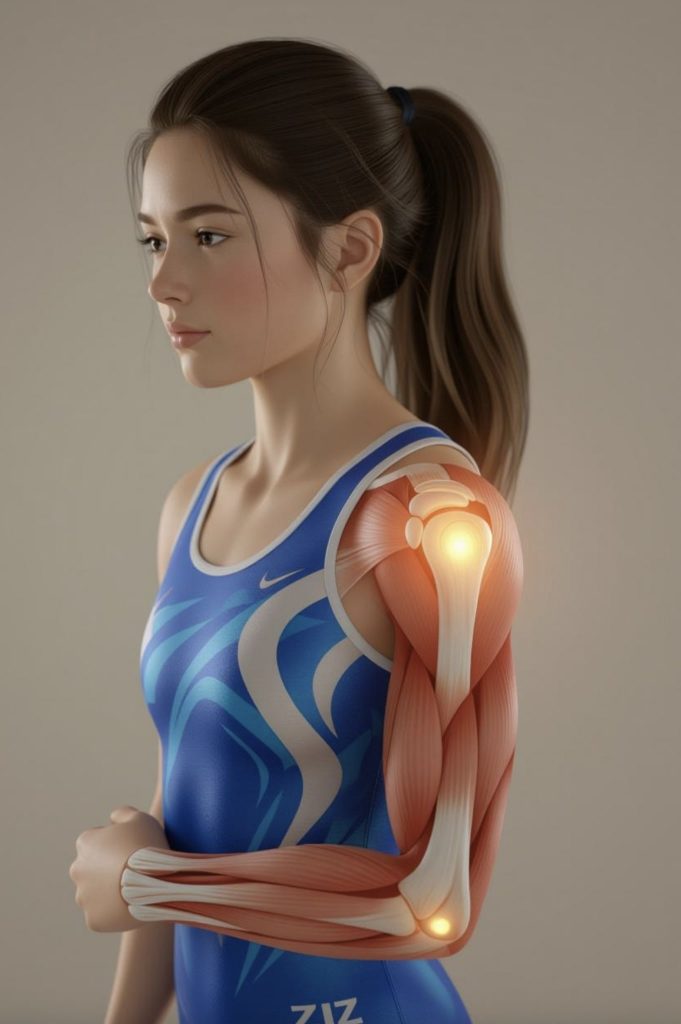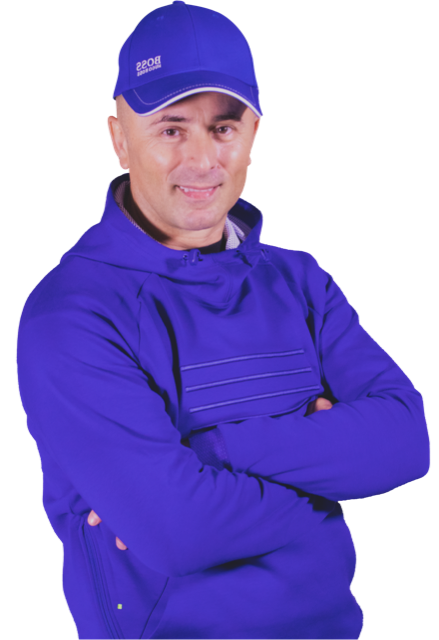Shoulder dislocation and sciatica are two prevalent conditions that affect many people across the UK. They can be both painful and disruptive. A dislocated shoulder comes with sudden discomfort and makes it hard to move the arm, while sciatica causes shooting pain that travels from the lower back down the leg. This pain can interfere with work, sleep, and everyday routines.
You don’t have to worry, as these two conditions can be effectively managed with the right treatments and therapies. From medical procedures to massage therapy, there are safe and effective ways to alleviate pain and expedite recovery. In this guide, we’ll take a closer look at shoulder dislocation and sciatica, and we’ll cover helpful strategies that can help you move toward a healthier, pain-free life.
Shoulder Dislocation and Nerve Pain: A Treatment and Recovery Guide
A shoulder dislocation is a common orthopaedic injury that happens when the upper arm bone (the humerus) slips out of the socket in the shoulder blade. This usually occurs after a fall, accident, or sports injury. It usually requires a closed reduction procedure to treat it.
During the procedure, a healthcare professional carefully moves the humerus bone back into its socket to restore proper alignment. To keep the patient comfortable and reduce pain, this is usually done under sedation or anaesthesia.
Once the closed reduction is successfully done, the shoulder is placed in a sling or brace to limit movement. This gives the ligaments and soft tissues around the joint time to heal and regain stability.
Following this, rehabilitation exercises are the next step. This stage focuses on regaining shoulder mobility and strength through stretches, resistance training, and targeted exercises. Strengthening the rotator cuff muscles and improving flexibility are particularly important in preventing future dislocations.
In addition to shoulder dislocation, many people also experience nerve pain, particularly sciatica. Sciatica happens when the sciatic nerve in the lower back becomes irritated or compressed. Symptoms can include shooting pain, numbness, tingling sensations, or weakness in the affected leg.
Treatment for sciatica typically involves a combination of medication, physiotherapy, and lifestyle modifications. Nonsteroidal anti-inflammatory drugs (NSAIDs) and muscle relaxants may be prescribed, while physical therapy helps improve spinal alignment and strengthen the core to ease pressure on the nerve.

What is a shoulder dislocation?
The shoulder joint is a ball-and-socket joint, where the round head of the humerus (upper arm bone) fits into the shallow socket of the scapula (shoulder blade). This structure allows for a wide range of movement but also increases the likelihood of shoulder dislocation compared to other joints.
A dislocation happens when the ball slips out of the socket. Falls, sports injuries, or heavy lifting may cause this. In some cases, excessive pulling or extreme force can exacerbate the injury. Understanding the types of dislocations is crucial for selecting the appropriate treatment.
Shoulder Dislocation: Info & Strategies
1. Understanding the Types of Shoulder Dislocations:
- Anterior dislocation: The most common type is often caused by sports or falls. It is more likely to occur in younger people because of physical activity and in older people due to weaker joints.
- Posterior dislocation: It is less common and is caused by seizures, electric shocks, or sudden twisting of the arm. It can be partial or complete due to falls or violent arm twisting.
- Inferior dislocation: This is the rarest type of shoulder dislocation, which happens when the humeral head is dislocated downwards due to hyperabduction or direct loading force.
2. Symptoms and Diagnosis:
- The symptoms of a dislocated shoulder are typically easy to recognise. The arm may feel weak or numb, and the shoulder can be very sore, swollen, and bruised. The pain is often sharp and makes it difficult to move the arm at all.
- The diagnosis of shoulder dislocation involves the doctor asking about how the injury occurred and examining the shoulder. They may also order imaging tests, such as an X-ray, MRI, or musculoskeletal ultrasound, to visualise the joint clearly and rule out any other potential damage.
3. Strategies for Dealing with Shoulder Dislocations:
- Positive affirmations: Encourage the patient to maintain a positive outlook and believe in their body’s ability to heal and recover. Keeping a good mindset helps the body heal.
- Get medical help quickly: If you notice the symptoms of a dislocation, don’t wait. See a doctor immediately for proper diagnosis and treatment.
- Exercise after treatment: Once the shoulder is set back in place, gentle exercises prescribed by a physiotherapist can help build strength, improve mobility, and reduce the risk of recurrence.
4. Motivational Quotes:
- “Strength doesn’t come from what you can do. It comes from overcoming the things you once thought you couldn’t.”
- “Your body is strong and resilient. Trust in the healing process and take steps towards recovery daily.”
With the right mindset, proper treatment, and consistent exercises, a dislocated shoulder can heal well. Believing in your recovery and following through with care makes all the difference.

Treating Shoulder Dislocation and Nerve Pain
A shoulder dislocation is a common injury, but fortunately, it can be treated in several ways. Once doctors figure out what type of dislocation it is, they usually use a combination of treatments such as:
- Closed reduction: The doctor carefully moves the shoulder joint so the bone slides back into its socket.
- Immobilisation: After the shoulder is put back in place, it’s often kept still with a sling or brace to give the tissues time to heal.
- Rehabilitation: Physical therapy and regular exercise are crucial for regaining strength and mobility.
- Surgery: In more serious cases, or if the dislocation keeps recurring, surgery might be needed to stabilise the shoulder joint.
- Medication: Pain relievers can be prescribed to ease discomfort during recovery.
Nerve pain, particularly sciatica, is another common type of pain that people experience. Sciatica occurs when the sciatic nerve in the lower back becomes irritated or compressed. This can cause:
- Weakness
- Numbness
- Burning or tingling feeling
- Difficulty moving the foot and leg
Managing this type of pain often involves regular exercise, massage therapy, and, in severe cases, surgery. Dr Jeffrey N. Katz, a professor of medicine and orthopaedic surgery, emphasises the importance of treating chronic back pain early to prevent nerve-related problems, such as sciatica.
Shoulder Dislocation: Treatment and Recovery Journey
Shoulder Dislocation Treatment:
If you dislocate your shoulder, the first thing you need to do is seek medical help immediately to reduce the pain and lower your risk of further complications. The first step is usually a closed reduction, where a doctor gently puts the shoulder back into place. It can be uncomfortable, but it’s necessary to stabilise the joint and reduce the chances of it happening again.
Nerve Pain Management:
After a shoulder dislocation, there is a tendency that you will also deal with nerve pain. This occurs because the nerves surrounding the joint may become stretched or compressed during the injury. There are many ways to manage it when such a thing happens. Doctors may prescribe medication or, in some cases, use nerve blocks to ease the pain.
Additionally, incorporating physical therapy and stretching exercises can help you recover more quickly. These approaches help calm irritated nerves, restore normal function, and reduce lingering pain over time. With proper care, recovery becomes easier, and the shoulder can return to its normal functioning.
Sciatica Symptoms and Treatment:
It can be a bit hard for you to quickly recover if you suffer sciatica and shoulder dislocation at the same time. This is because sciatica causes pain that spreads from the lower back down the leg, with numbness or weakness. The treatment typically involves the use of pain medication, exercises to alleviate pressure on the nerve, and techniques to improve posture and spinal alignment. When you address the cause of sciatica, it can bring real relief and help improve overall quality of life.
Rehabilitation Exercises for Shoulder Dislocation:
Performing the right exercises is one of the most crucial steps in recovering from a shoulder dislocation. These movements are designed to strengthen the muscles around your shoulder, restore your range of motion, and maintain joint stability. Some common exercises include gentle shoulder stretches, rotator cuff strengthening, and drills to improve the way your shoulder blade (scapula) supports movement. Sticking with these exercises regularly helps speed up recovery and lowers the chance of the shoulder dislocating again in the future.
Importance of Physical Therapy in Recovery:
Physical therapy is one of the most crucial steps in recovering from a shoulder dislocation. Working with a trained therapist provides you with a personalised plan tailored specifically to your needs. This may include custom exercises to build strength, hands-on techniques to ease stiffness, and simple lessons on how to move safely. These sessions don’t just rebuild the shoulder muscles; they also help you feel more confident using your arm again without worrying about another injury.
When combined with other treatments, physical therapy can significantly enhance recovery. It helps people move past the pain and stiffness of a dislocation and also supports better outcomes for issues like sciatica. Taking a comprehensive approach, including exercises, therapy, and healthy lifestyle changes, can make a significant difference. Remember, receiving proper care at the right time can lead to reduced pain, improved mobility, and a return to a more active, pain-free lifestyle.
